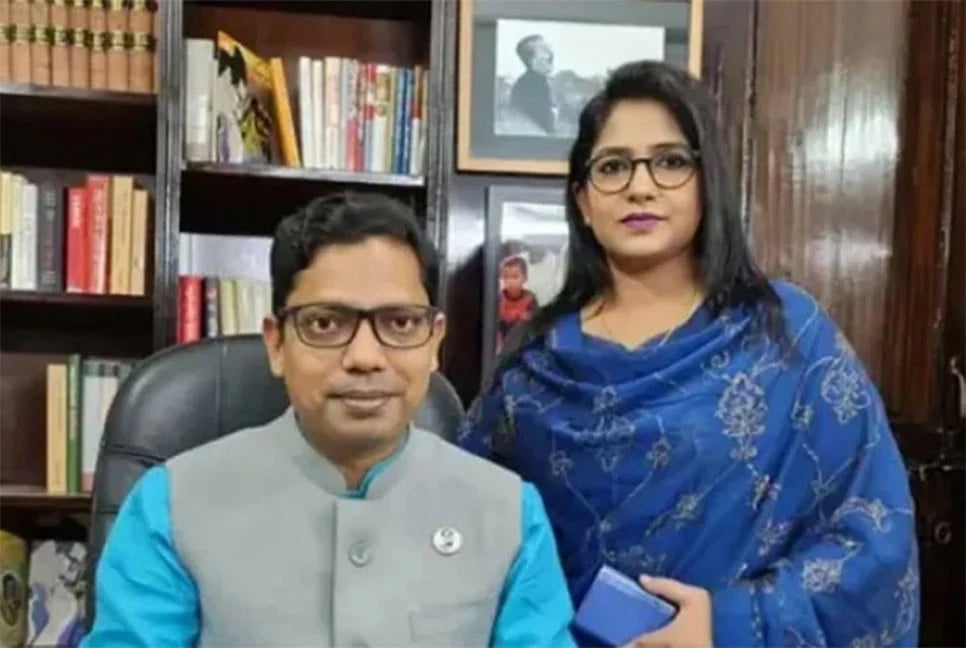The Commission of Inquiry on Enforced Disappearance has revealed that victims of enforced disappearance have endured systematic and inhuman torture in secret detention centers.
"The accounts of torture we have documented are both profoundly brutal and disturbingly methodical," the commission stated in its report, according to BSS.
The five-member commission led by retired justice Mainul Islam Chowdhury handed over the report titled "Unfolding The Truth" to Chief Adviser Prof. Muhammad Yunus at the state guest house Jamuna on Saturday.
The commission found that notable distinction has emerged between the premises under the management of military officers and those overseen by civil forces, such as the police.
In facilities managed by civil forces, such as DB and CTTC torture was carried out in a manner that integrated it into the daily operations of these offices, the report said.
"Our findings indicate that although specialised torture equipment was used, the acts of torture were conducted routinely within the same space occupied by the security personnel," the commission said in its report.
Detainees have reported witnessing officers calmly working at their desks or computers—screams of agony notwithstanding— within close proximity to the areas where torture was being perpetrated, suggesting a disturbing normalisation of such practices at these offices, it said.
"Conversely, the premises controlled by military commanders, such as those managed by RAB and DGFI, exhibited a more specialised infrastructure for torture," the report said.
These facilities were often equipped with soundproofed chambers and specialised instruments, including mechanised ones, designed explicitly for inflicting physical and psychological harm, it said.
"While we are withholding detailed descriptions of these facilities to safeguard the integrity of our ongoing inquiry, we will provide a comprehensive account in the Commission’s final report," it added.
The commission mentioned two examples to illustrate the nature and severity of the torture practices employed.
In one instance in 2010, a young man was abducted by RAB from Dhanmondi.
He reported that he was taken to a room where his lips were immediately sewn without the use of any anesthetic.
He described the procedure as being akin to stitching cowhide, underscoring the utter dehumanisation inflicted upon him.
In a separate incident eight years later, a middle-aged man recounted that his genitals and ears were electrocuted.
This torture also took place at a RAB facility.
The consistency in torture practices, despite the significant temporal and geographical separation between these cases, strongly suggests that such practices were not only systemic but also institutionalised across these forces, the report said.
These findings highlight the pervasive and calculated nature of torture within the entities and stress the urgent need to address the structural and cultural factors that have allowed these practices to persist.
In the majority of cases, victims of enforced disappearances have exited the system through either of two channels: they are either killed or they are released into the criminal justice system.
A very small minority have been released without any charges being filed against them; the victims released after August 5 changeover are examples in point.
For those who were killed, we have received some verified reports detailing the methods of execution, the commission said.
In cases where bodies were recovered, post-mortem examinations revealed that the victims had been shot in the head and disposed of in rivers with cement bags tied to their bodies.
This method was described by military officers who had served in RAB as standard procedure to ensure that the bodies would sink.
Specific sites of killing and disposal include the Buriganga River, Kanchon Bridge, Postogola Bridge etc, the commission report said.
The Postogola Bridge location, in particular, had a boat—confiscated during a raid on a pirate den in the Sundarbans—that had been modified for use in these nefarious operations.
Officers were frequently active participants of these executions.
"One witness, himself a RAB battalion commander, recounted an "orientation" session conducted by the then head of RAB Intelligence Wing, during which two victims were shot on a bridge in front of him as part of his initiation into RAB," the report said.
Another soldier, previously deputed to RAB Intelligence, described a victim attempting to escape by jumping into the river.
He retrieved the victim who was immediately executed on the spot.
The commission report said there are also accounts of alternative methods of killing.
One soldier reported being ordered to carry a body to a railway line in Dhaka, where it was placed on the tracks.
The officers and soldiers waited in their vehicle until a train passed, dismembering the body.
In another instance, a surviving victim described being pushed onto a highway in front of an incoming vehicle by a police officer.
By chance, the vehicle swerved and avoided hitting him.
The officer, unwilling to make a second attempt, abandoned the effort, sparing the victim’s life, the report said.
These reports indicate that the methods of execution were varied but shared a common intent to eliminate the victims and, in some cases, dispose of their remains in ways that would prevent recovery or identification.
Disproving claims of being the work of rogue officers, the systemic nature of these practices, involving multiple locations and agencies, highlights the coordinated efforts behind these crimes.
Bd-Pratidin English/ARK









































































